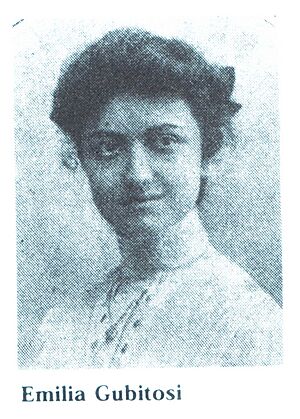Emilia Gubitosi facts for kids
Emilia Gubitosi was an amazing Italian musician. She was born on February 3, 1887, and passed away on January 17, 1972. Emilia was known as a brilliant pianist and a talented composer.
Her Life Story
Emilia Gubitosi was born in the beautiful city of Naples, Italy. She loved music from a young age. She studied at the Conservatorio San Pietro a Majella in Naples. She learned from many great teachers there.
In 1906, Emilia achieved something very special. She earned a diploma in piano. In the same year, she became the first woman ever to graduate in composition from the conservatory. This was a huge achievement for women in music!
After finishing her studies, Emilia became a concert pianist. She performed her music all over Europe. She also worked as a music administrator, helping to organize musical events.
In 1914, Emilia started teaching at the Conservatory where she had studied. She taught there for a very long time, until 1957. She also helped the symphony orchestra in Naples. She even led the choir school that was connected to it.
Emilia was very passionate about music. In 1918, she helped create a group called the Associazione Musicale Alessandro Scarlatti. This group worked to share and celebrate old Italian music. Emilia Gubitosi lived her whole life in Naples.
Her Musical Works
Emilia Gubitosi was a composer, which means she wrote music. She created many different types of musical pieces. Most of her works were for a full orchestra. She also wrote music for smaller groups of instruments, called chamber works. She even composed songs.
Here are some of her important musical pieces:
- Concerto for piano and orchestra (written in 1917)
- Allegro appassionato for violin and orchestra (1925)
- Sinfonia for a large orchestra (published in 1932)
- Corale sinfonico for orchestra and organ (1941)
- Notturno for orchestra (1941)
- Il flauto notturno, for a singer, flute, and orchestra
- Favoletta Russa (1931) for piano
Emilia also took old vocal music from the 1600s and 1700s and arranged it. This means she changed it slightly so it could be played or sung in new ways. She also wrote books about music theory. These books helped others learn about music.


